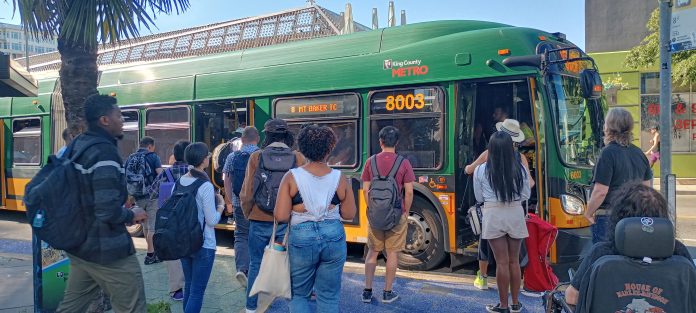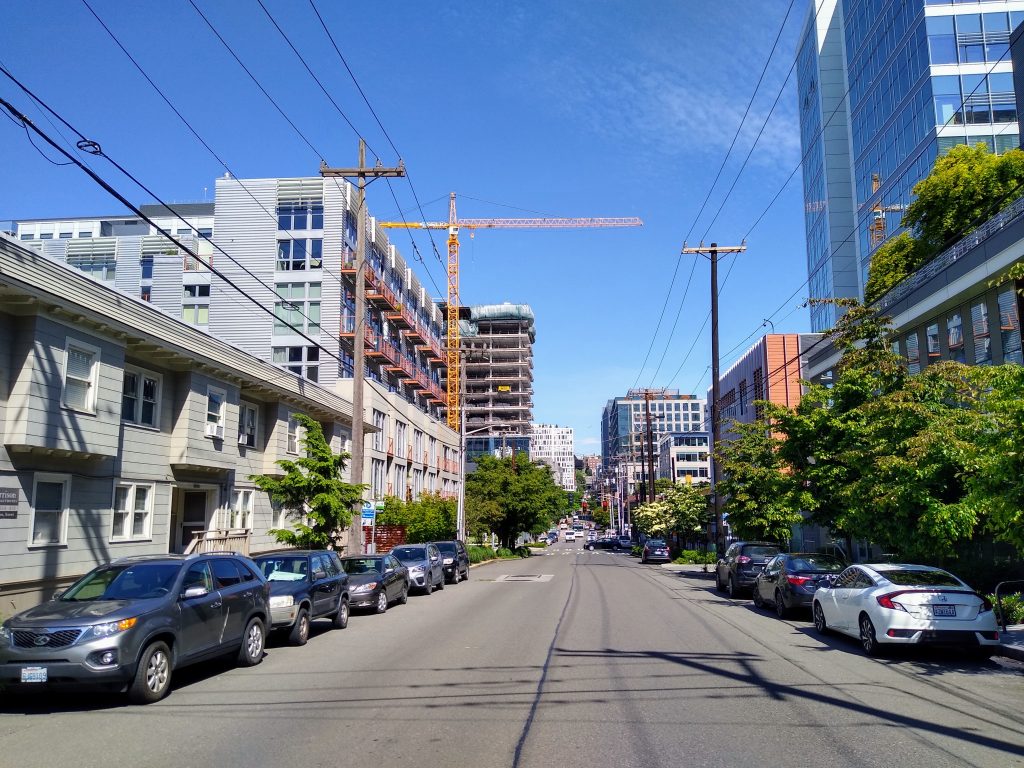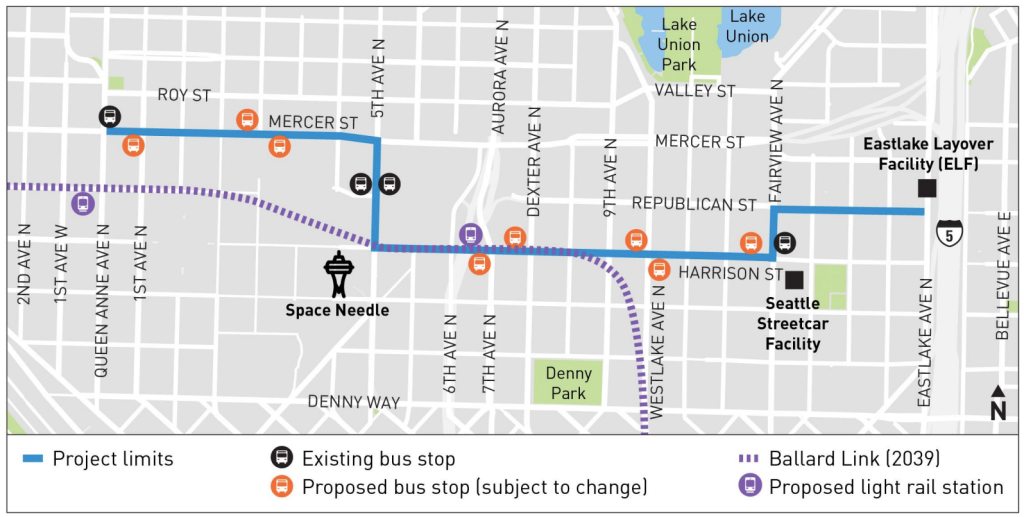
The Seattle Department of Transportation (SDOT) is moving full speed ahead with a project that could allow buses, including the infamously delayed Route 8, to bypass the most heavily congested stretches of the Denny Way corridor within four years, saving riders hundreds of thousands of hours per year. In a request for $8.2 million in federal funding from the Puget Sound Regional Council (PSRC) submitted this spring, the department has provided more details on what a potential transit corridor along Mercer Street and Harrison Street in South Lake Union could look like.
Two years ago, The Urbanist covered the initial request for funding to advance the idea of a new east-west transit street in South Lake Union, a proposal that aligns with King County Metro’s vision for a fully connected bus network as laid out in its (largely unfunded) Metro Connects plan. That plan doesn’t abandon the Denny Way corridor entirely, but does call for several different routes to use Harrison Street and envisions the Route 8 being rerouted west of Fairview Avenue N, connecting to Uptown via Mercer Street. Metro Connects also envisions new bus routes like a direct connection between Seattle’s North Downtown and Kirkland, as well as a route between Uptown and North Capitol Hill.
A Harrison Street transit corridor would complement the location of a planned South Lake Union light rail station as part of the Ballard Link Extension project, originally studied at 7th Avenue N and Harrison Street. But with the Sound Transit board contemplating moving that station further west toward 5th Avenue N and Harrison Street, the need for more robust east-west connections will still exist even if the exact locations of stops will have to be modified, and the distance most riders would have to walk to make north-south connections would likely increase.

Now SDOT is seeking construction funding for the project, which will be matched with $10.3 million from the 2020 Seattle Transit Measure, which includes a dedicated funding stream for transit capital projects. If the match from PSRC is secured, the project would be fully funded, and construction could be completed by the end of 2027 and be ready to serve riders by 2028.
“For King County Metro Route 8, which currently operates on Denny Way between Fairview Ave N and Queen Anne Ave N, passengers experience an average of 825 hours of delay per weekday,” the project application notes. “By converting Harrison St into a roadway that can support transit, there will be an additional east-west corridor to improve transit reliability.”
Transit advocates have been pushing for a way to speed up buses on Denny Way right now. Route 8 ridership has inched closer to pre-pandemic levels, but buses have to compete for street space with car commuters on Denny Way heading to I-5. However, a repaving project set to start construction later this year includes only minimal improvements for bus riders, including a planned deletion of a stop intended to reduce dwell times. An eastbound bus lane added to Denny between Fairview and Stewart Street in 2018 proved a considerable (albeit localized) benefit to riders, but so far the political will to extend it hasn’t materialized.
Without any real solutions on the horizon to get bus riders out of Denny Way traffic, it’s hard to see the Route 8 staying on the street after the City of Seattle prioritizes buses on Harrison Street. But King County Metro isn’t yet fully committed to the idea of moving the 8.
“Metro and SDOT have made substantial investments to improve Route 8 reliability in the last five years and Metro remains commited to providing bus service on Denny Way,” an FAQ posted to SDOT’s project website states. “Shifting Route 8 to the Harrison and Mercer corridor is only one of several potential options to utilize an additional east-west pathway for buses through South Lake Union and Uptown. Before the corridor is ready for service in 2028, Metro will evaluate different service options to determine what routes will operate in the new corridor.”

Only a few details are available right now about what a transit corridor on Harrison Street or Mercer Street might actually look like, with the overall project just at 10% design. Currently, Metro and SDOT are planning for near-term bus volumes on the corridor of 6-10 buses per hour, well below the 40 buses per hour envisioned by 2050 if Metro’s long range plan was fully funded. Existing parking lanes and turn lanes are likely to be repurposed into transit lanes, with the potential to expand the street’s existing sidewalks. While basic bus infrastructure like shelters, benches, and real-time arrival signs are expected to be part of the final design, trolley wire infrastructure along the street is still being considered.
“In addition to its direct benefits to the bus riders along the corridor, this project would also present an opportunity to incorporate Seattle Streetcar operations and future regional light rail services, improve pedestrian mobility and the urban realm, and support recent and potential development in the area,” the application notes.
One block away, SDOT is modifying Thomas Street to become the de-facto bike and pedestrian corridor between Seattle Center and the Cascade neighborhood, with a new protected intersection at Dexter Avenue N set to open in the coming weeks. Along I-5, King County Metro is getting very close to completing its long-planned Eastlake layover facility, the location of which complements the Harrison Street transit corridor quite well.
With Denny Way remaining the most direct route between Seattle’s most dense neighborhoods, the fact that the best solution for transit riders is to give up on the street is a little disheartening, but to date, this project has been the most feasible idea put forward that could get Route 8 riders out of traffic, unlocking thousands of hours of annual bus service that could be reinvested elsewhere in the city.
Ryan Packer has been writing for The Urbanist since 2015, and currently reports full-time as Contributing Editor. Their beats are transportation, land use, public space, traffic safety, and obscure community meetings. Packer has also reported for other regional outlets including BikePortland, Seattle Met, and PubliCola. They live in the Capitol Hill neighborhood of Seattle.

